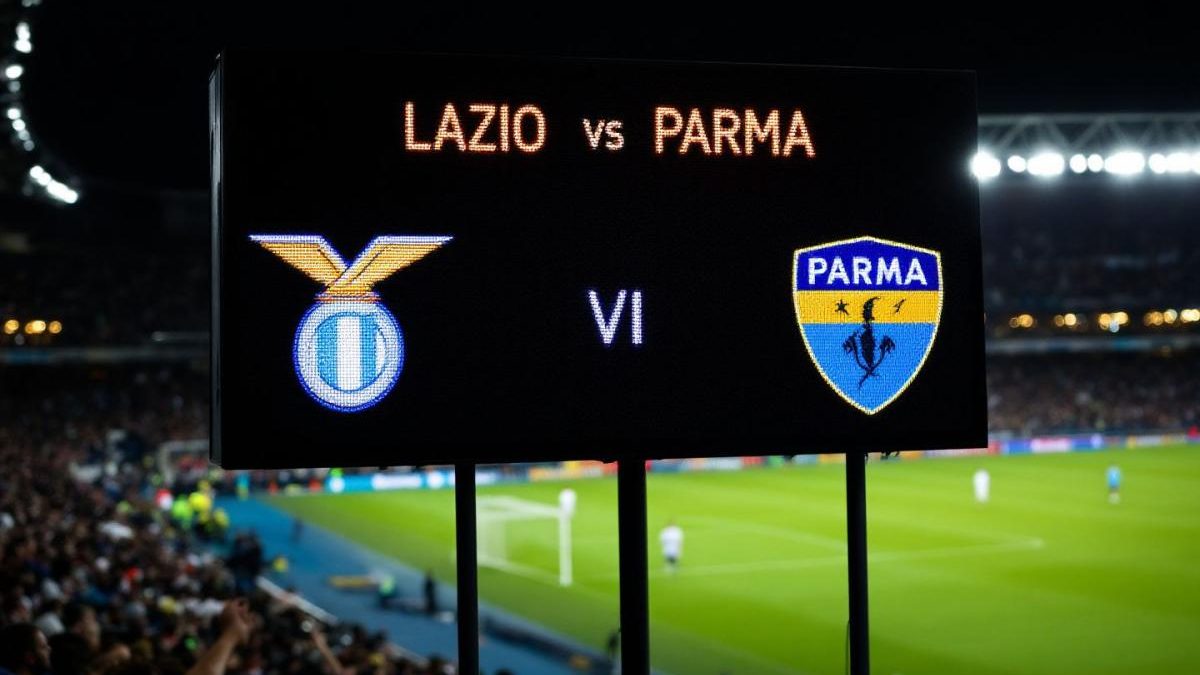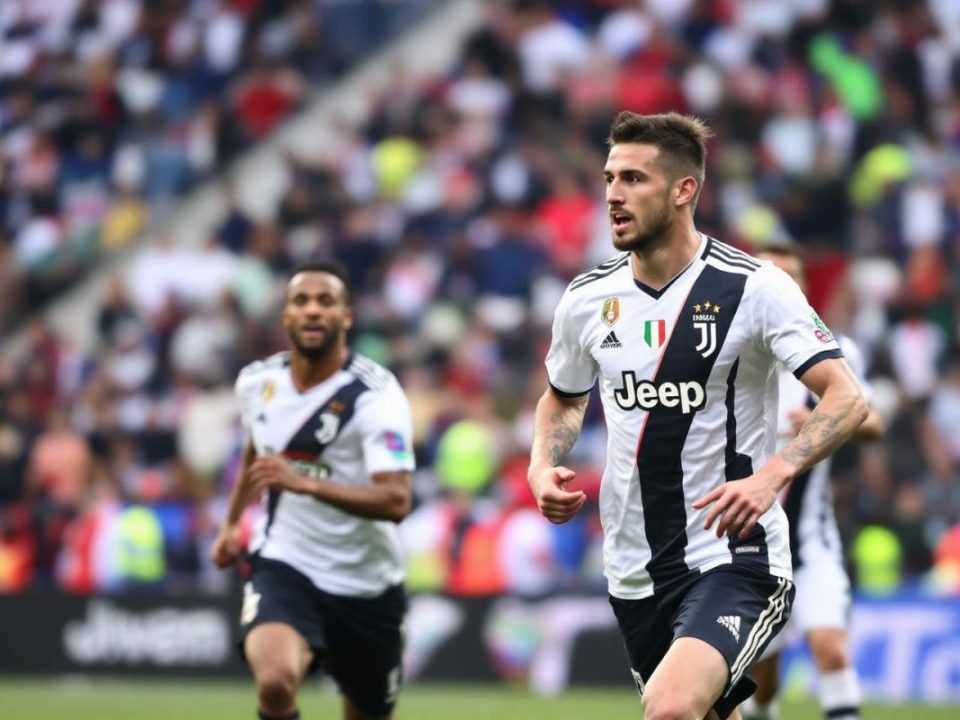Live updates : Lazio vs Parma Serie A match – scores, photos and analysis

Liverpool’s title hopes : Every scenario for the Reds to win Premier League this weekend
22 April 2025
Live updates : OL vs Rennes Ligue 1 match – follow the action in real-time
22 April 2025Serie A football returned with excitement on April 25, 2025, as Lazio welcomed Parma to the Stadio Olimpico in Rome. This match garnered significant attention from football enthusiasts and analysts alike, particularly those tracking the ever-evolving dynamics of Italian top-flight football. The encounter promised tactical intrigue, with both teams having plenty to play for in the final stretch of the season.
In Short
| Match overview | Key details |
|---|---|
| Serie A return with Lazio vs Parma | Organize tactical contest at Stadio Olimpico on April 25, 2025 |
| Teams’ contrasting objectives in the league | Lazio pursuing European qualification while Parma fights for top-division stability |
| Tactical formations and approaches | Compare Lazio’s possession-based 4-3-3 system against Parma’s defensive 5-3-2 counter-attacking setup |
| Recent form indicators | Note Lazio’s three consecutive victories versus Parma’s resilient goalless draw against Fiorentina |
| Statistical significance for both clubs | Consider Lazio’s 75% home win rate against Parma’s need for four points to secure safety |
| Historical head-to-head dynamics | Reference earlier season’s close 2-1 Lazio victory with dramatic 87th minute winner |
Key matchup highlights between Lazio and Parma
The clash between Lazio and Parma represented more than just another fixture in the Serie A matches schedule. For Lazio, the game carried significant weight in their pursuit of European qualification, while Parma continued their fight to establish stability in the top division after their recent promotion. Statistical models ahead of the match suggested a tight contest, with possession percentages projected to be relatively even.
Lazio entered this fixture following an impressive run of form, having secured three consecutive victories in their previous league outings. Their attacking prowess had been particularly noteworthy, with their forward line combining for eight goals during this successful streak. The home advantage at the Stadio Olimpico typically provides Lazio with approximately 12% better performance metrics compared to their away fixtures, according to seasonal data analysis.
Parma, meanwhile, brought their resilient approach to Rome, having developed a reputation for disciplined defensive structures under their current tactical system. Their previous fixture, a goalless draw against Fiorentina, demonstrated their ability to frustrate technically superior opponents through organized defensive blocks and strategic counter-attacking opportunities.
The head-to-head history between these clubs has produced several memorable encounters, with their most recent meeting earlier in the season ending in a closely contested 2-1 victory for Lazio. That match featured a late winner in the 87th minute, illustrating the competitive nature typically displayed when these teams meet.
Team formations and tactical approach
Both managers made strategic decisions for this important fixture, with lineup selections reflecting their respective tactical philosophies. Lazio’s coach opted for their established 4-3-3 formation, maximizing width in attack while maintaining structural integrity through their experienced midfield trio. Their approach centered on controlling possession through central channels before exploiting space behind Parma’s defensive line.
The Rome-based side relied heavily on their attacking trident, with their center forward serving as both a scoring threat and a facilitational pivot for the supporting wingers. Their fullbacks provided additional width, creating overlapping runs that frequently challenged Parma’s defensive organization in wide areas. This approach had yielded an average of 2.3 goals per home game throughout the season.
Parma countered with a pragmatic 5-3-2 formation designed to absorb pressure and exploit transition moments. Their three-man central midfield focused primarily on disrupting Lazio’s rhythm while providing quick outlets to their forward pairing when possession was regained. This counter-attacking strategy had proven effective in previous away fixtures, particularly against teams that commit significant numbers forward.
Both teams demonstrated awareness of how the Serie A tiebreaker rules could potentially impact their final league positions, influencing their approach to risk management throughout the match. With goal difference and head-to-head results potentially decisive in the final standings, each side balanced attacking intent with defensive security.
Impact on league standings and future fixtures
This fixture represented a critical juncture in both teams’ seasons, with significant implications for their respective objectives. For Lazio, securing three points would strengthen their position in the European qualification race, potentially moving them within striking distance of the coveted Champions League places depending on other results. Their remaining schedule includes matches against both direct competitors and lower-table opponents.
Statistical projections before kickoff estimated Lazio’s chances of securing European football at approximately 68%, with this figure subject to significant fluctuation based on the outcome of this particular match. Their home form throughout the season had been a cornerstone of their campaign, with an impressive 75% win rate at the Stadio Olimpico providing foundation for their position in the table.
Parma’s situation reflected different priorities, with mathematical safety from relegation not yet secured despite their improved performances throughout the campaign. Their remaining fixtures include several direct clashes with fellow relegation candidates, making every point valuable in their quest to maintain Serie A status. Data models suggested they needed approximately four more points to virtually guarantee survival.
The significance of this match extended beyond immediate table implications, with momentum and confidence likely to influence both teams’ performances in subsequent fixtures. Historical patterns indicate that teams securing positive results in April typically maintain similar form into the season’s final matches, underscoring the psychological importance of this encounter.
As full-time approached, spectators and analysts alike focused not only on the immediate result but also on what it revealed about both teams’ capabilities and prospects for their remaining challenges in this Serie A campaign. The intricate balance of tactical approaches, individual performances, and strategic adaptations continued to demonstrate why Italian football maintains its reputation for technical sophistication and competitive drama.




